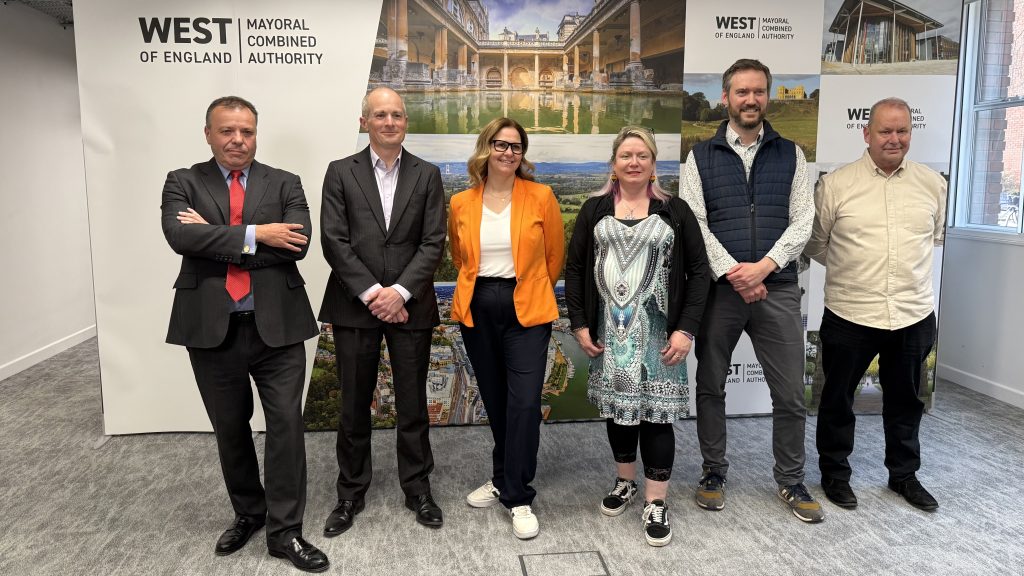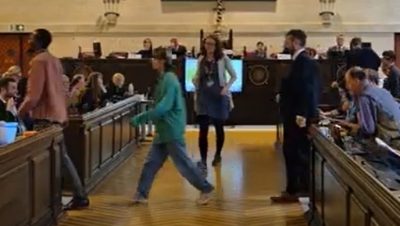
Your say / Politics
‘Turnout not tactics will decide the WECA mayoral election’
As we approach voting day, voters are scrambling around for insight into what a combined authority actually is, who is the current mayor, what the metro mayor does and who they should back at the ballot box.
Meanwhile, political parties rush to find anything – polling, betting odds, historic data or canvass returns – that lets them frame themselves as potential winners or challenges in a contest often framed in electoral and sporting terms as a two-horse race (even if the polling suggests it’s not that simple).
This isn’t a piece about the merits or failings of non-proportional electoral systems. With the West of England Combined Authority (WECA) mayoral election on Thursday, the question many are asking is simple: who is likely to win?
is needed now More than ever
As someone who studies politics and elections, I’m often asked to make sense of local contests like this, and the honest answer is that it’s extremely difficult to call.
Modelling the outcome of a metro mayoral election is much more complex than it might seem. To dive a bid deeper, one major reason is that we simply don’t have a reliable model for how people vote in these elections.
Unlike general elections, which benefit from decades of polling data and trends, metro mayoral elections are relatively new and infrequent.
Here in the West of England, we’ve only had two previous contests, in 2017 and 2021, and both operated under very different political conditions.
Trying to extrapolate from local elections or parliamentary results is fraught with difficulty.
The boundaries don’t match neatly: WECA covers Bristol, South Gloucestershire and Bath & North East Somerset, but not of the old Avon area such as North Somerset.
Politically, these areas differ significantly. Bristol leans left, South Gloucestershire tends a little more towards the right, and Bath & North East Somerset is a classic Liberal Democrat versus Conservative battleground.
The issues at stake are different too. In general elections, voters focus on national matters like the economy, the NHS or immigration.
Metro mayor contests, however, are about devolved issues such as transport, housing, skills and regional development.
Even if leaflets are filled with rhetoric about Westminster, NHS waiting lists or other national concerns, the role itself remains locally grounded, unlocking development sites, reopening train stations or creating new bus lanes.
Strong, locally recognisable candidates can cut through party loyalties in unexpected ways.
Plus, there is the added complexity of the voting system itself. Until now, WECA elections used the supplementary vote system, allowing voters to choose a first and second preference.
This often encouraged those supporting smaller parties like the Greens or Liberal Democrats to “vote with their heart” first, knowing they had a backup option if their top choice did not make the final two.
In 2021, for example, the Green Party came second in Bristol on first preferences ahead of Labour, reflecting strong urban support, but Labour won overall thanks to second preferences.
But in 2025, WECA shifts to first-past-the-post. Whoever gets the most votes wins. No second chances, no rounding up of support.
That change could significantly alter behaviour. Will voters stick with preferred candidates or smaller parties, or coalesce around perceived frontrunners to avoid “wasting” their vote?
It’s a huge unknown. It is hard to tell, and harder still to predict at a regional level where local identities and party loyalties blur.

There are six candidates standing for election on Thursday – photo: Martin Booth
I do not envy even the bravest statistician or modeller to throw out a prediction, as so many factors drive into the unpredictability of the outcome, and so many different stories being used to demonstrate a top two contenders.
Name recognition will play a role the candidate list includes current and former councillors as well as high-profile figures like Arron Banks standing for Reform UK.
There are incumbency and mid-term factors too, national trends may weigh heavily, will voters look to give the Labour government of the day an electoral kicking, the Conservatives remain on a doom spiral and are still reeling from their general election defeat.
The Greens have had a sustained surge in Bristol’s recent local elections and now co-lead the council in collaboration with the Liberal Democrats under the newly restored committee system.
Meanwhile, outside of Bristol the Liberal Democrats dominate in terms of councillor numbers across the WECA area and form a ‘golden halo’ of MPs around the city.
And that’s without even getting into turnout, which will vary significantly between areas and demographics across Bristol, Bath & North East Somerset and South Gloucestershire.
…………………………………….
Read more: ‘Where is the vision in the WECA mayoral race?’
…………………………………….
In as much as I’m willing to throw in any form of prediction, I am very confident that while headline polling and historic vote shares will grab people’s attention, the variations in who turns out and where will decisively shape the final outcome.
In 2021, Bristol saw a strong Green vote, particularly concentrated in wards where there were also local council elections happening on the same day.
In these areas, highly targeted Green Party campaigns mobilised voters around both the city council contests and the broader combined authority race.
The presence of visible local campaigns, community activism and motivated supporters made a real difference: Jerome Thomas, the Green candidate, came second on first preferences in Bristol, even ahead of Labour in some pockets.
However, because of the overall distribution across the wider WECA geography, and the nature of second preference transfers, Labour’s Dan Norris ultimately won the mayoralty.
This illustrates how turnout is not just a matter of numbers but also of momentum.
When voters are animated by local issues or motivated to back candidates, they identify with closely at the community level, it can create ‘turnout hotspots’ that dramatically alter the balance within one part of the combined authority area.
By contrast, turnout was generally lower in South Gloucestershire and Bath & North East Somerset in 2021, where there were fewer overlapping elections and less visible local mobilisation.
These turnout gaps matter: WECA is made up of areas with very different political leanings and even small variations in turnout rates between them can magnify or blunt a party’s overall support.
Looking ahead to 2025, there is no Bristol City Council election alongside the WECA contest. Without concurrent elections to drive people to the polls, getting the vote out becomes even more important, and differential turnout could once again make the difference between victory and defeat.
With a flurry of contrasting polls in recent days, one showing a Green lead, another with Labour in the box seat and a pundit in the Financial Times calling it for the Liberal Democrats, nearly all parties remain within the margin of error, and still could cause a surprise.
Over the next week, parties will be focusing entirely on one thing: getting their voters out, before we get to hear the result of the only vote that actually counts on May 1.
This is an opinion piece by Dr Thom Oliver, a senior lecturer in politics at UWE Bristol and part of the Bristol Civic Leadership Project team which has studied mayoral governance in Bristol and the West of England since 2013
Main photo: Bristol24/7
Read next:
 Our newsletters emailed directly to you
Our newsletters emailed directly to you



















